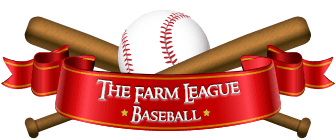Run a Fun and Efficient Practice
 By Cal Ripken, Jr. By Cal Ripken, Jr.
Hearing Billy's story about his son's experience in recreational baseball made me think of how painstaking practice can be for the youngest of players. Usually its the games which are the most fun and practice is typically where you have the strongest battle as a coach to keep kids from yawning. We've all seen it. You're walking by a field and a local youth team is practicing. The coach is on the mound throwing batting practice and kids are scattered around the field. They're turning their hats around on their head, playing with the loose leather strands on their mitts and drawing shapes in the dirt with their cleats. One player is hitting, another is on deck and the rest shift around the field lackadaisically. Everyone hits. Everyone goes home. That's practice. Billy's example is hard to swallow and I hope a rare occurrence, but all too often what I just described is what happens at practices across the country. That reality leaves little doubt as to why so many kids move away from baseball as they grow older. Running a fun, efficient and effective practice is critical to helping your players develop their skills and also to foster their interest in the game. Use small groups and stations to keep players engaged. One thing we've learned over the years at Ripken Academy is that to teach baseball effectively, you must make the practices as interactive as possible. Use a variety of drills or stations and break big groups into smaller groups. In the "batting practice" example above, we have one station, one big group, and a whole lot of players doing nothing. You're much better off having 3-5 stations going at once. That way, your team of 15 or so players breaks down into much smaller groups. This is where you'll need to communicate well with the parents of your players. You're just one coach, and you may or may not have an assistant. To run a great practice, you'll need some additional help in order to have multiple stations going at once. Study your players and adjust the length of your drills to accommodate their ability to stay focused. This is especially important with players under 10 or 11 years old, who do not have the same attention span as older players. Keep your stations moving. As a general rule, with kids between the ages of four and six you should keep your practices to about an hour. When you jump up to seven, eight and nine year olds, you can tack on another 15-30 minutes. In the 10-12 age group, 90 minutes is about right and you can even push it a little longer if the players are especially engaged. So it helps to schedule out how your stations will break down in the course of your practice in order to make sure you cover everything you'd like within that limited amount of time. You'll also need to pay close attention to your players as the practice wears on. Some days it may just be scorching hot out and all your players may have a big birthday party to go to later - so maybe their motivation for practice is running a little low. It's okay to end practice early if you can tell your players are worn out or disinterested. At the High School level and higher, this mentality changes, but when you're coaching a young team, you should be able to gauge the level of interest your players are showing in practice. Pushing a practice too long when your players have clearly checked out will only create frustration for both the players and yourself. We all want players to be disciplined and practice the right way every time so that their skills grow and their play improves during games. But don't lose sight of the fact that this game should be fun, even when it's just practice. So, be creative as a coach - add some twists to your drills, include some contests, and make sure everyone is having a good time. Sample Practice Plan Here's a great practice plan with some good examples of drills you can run to keep everyone moving through multiple stations. Take this plan and use it yourself, or treat this plan as a template and drop in your own drills and stations. For every practice, you should come prepared with a plan like this one. Organization is a big key to coaching young players effectively. This plan is designed for players in the 10-12 age group.
|

